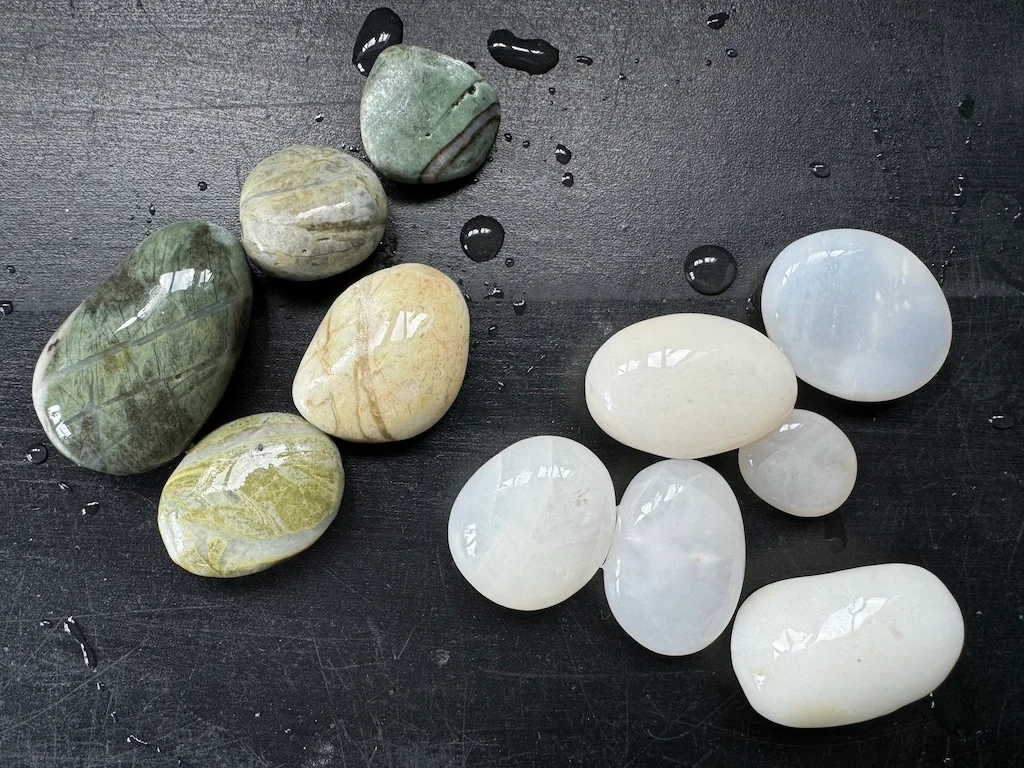What is the difference is between quartz and quartzite? Below are the definitions of both which is helping me to understand is the distinction between the two.
Although very informative and and of great assistance in learning how to recognise minerals and rocks, I do have to keep in mind that the The University of Auckland, Geology Rocks and Minerals website provides a background to the development of Auckland’s geological features not necessarily the same as Western Southland.
Quartz
Quartz is a hard mineral (7 on the mohs scale). It mostly occurs in hard white veins and granular masses. Quartz crystals can be colourless but trace amounts of various elements especially metals can give it tints of purple (amethyst), yellow (citrine quartz) or grey (smoky quartz).
It is one of the most common minerals in volcanic, plutonic, sedimentary and metamorphic rocks, where it usually looks like grains of grey glass mixed up grains of other minerals.
from: Mortimer, N., Campbell, H., & Low, M. et al; A photographic Guide to Rocks & Minerals of New Zealand. Pg 22
Clean, white quartz stones are often be found on Gemstone Beach as well as many beaches and rivers in the South Island. These types of quartz stones polish quite well but they aren’t as interesting as other stones found at Gemstone Beach that have the clear quartz veins.
Quartzite
Quartzite is a hard, non-foliated metamorphic rock which was originally pure quartz sandstone.[1][2] Sandstone is converted into quartzite through heating and pressure usually related to tectonic compression within orogenic belts.
The term quartzite is also sometimes used for very hard but unmetamorphosed sandstones that are composed of quartz grains thoroughly cemented with additional quartz. Such sedimentary rock has come to be described as orthoquartzite to distinguish it from metamorphic quartzite, which is sometimes called metaquartzite to emphasize its metamorphic origins.[3][4]
from: https://en.wikipedia.org/wiki/Quartzite
But it wasn’t until I read this explanation that I had an a-ha moment!
Quartzite is a metamorphic rock formed when quartz-rich sandstone or chert has been exposed to high temperatures and pressures. Such conditions fuse the quartz grains together forming a dense, hard rock. Quartzite generally comprises greater than 90% percent quartz, and some examples, containing up to 99% quartz, and are the largest and purest concentrations of silica in the Earth’s crust.
from: https://rocksminerals.flexiblelearning.auckland.ac.nz/rocks/quartzite.html
Although a quartz-rich sandstone can look similar to quartzite, a fresh broken surface of quartzite will show breakage across quartz grains, whereas the sandstone will break around quartz grains. Quartzite also tends to have a sugary appearance and glassy lustre.
The variety of colours displayed by quartzite are a consequence of minor amounts of impurities being incorporated with the quartz during metamorphism.
My Thinking
In New Zealand quartz and quartzite are two cool rocks that often get mixed up but they have some key differences.
Quartz is a mineral that’s made up of silicon and oxygen. It can form in lots of different colours, from clear to smoky gray. Apparently large, clean quartz crystals are rare in New Zealand but clear quartz can be found in veins of other stones. It can appear as veins in sedimentary, volcanic, plutonic and/or metamorphic rocks or stones.
An earlier blog post of mine What are Rocks and Minerals? mentions
“Rocks are simply aggregates of minerals and minerals are the individual elements that bind together to form rocks.“
Quartzite, however, is a rock formed through a transformation. It starts as sandstone, which is made up of tiny grains of quartz (over 90%). Over time, heat and pressure work their magic, turning the sandstone into a dense, hard rock. This process gives quartzite its smooth, often banded appearance and makes it much tougher and more durable than plain quartz. It’s like quartz got a makeover! Quartzites are generally white or pale grey in colour. Staining by other minerals can lead to yellow, orange and brown hues.

No wonder this has been confusing! So quartz and quartzite share a connection — quartzite is basically quartz’s tougher cousin!

One Reply to “Quartz vs Quartzite: What’s the Difference?”